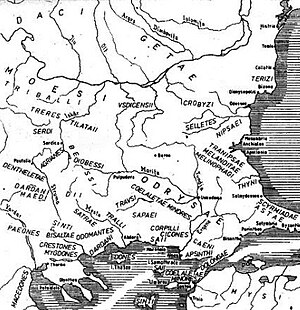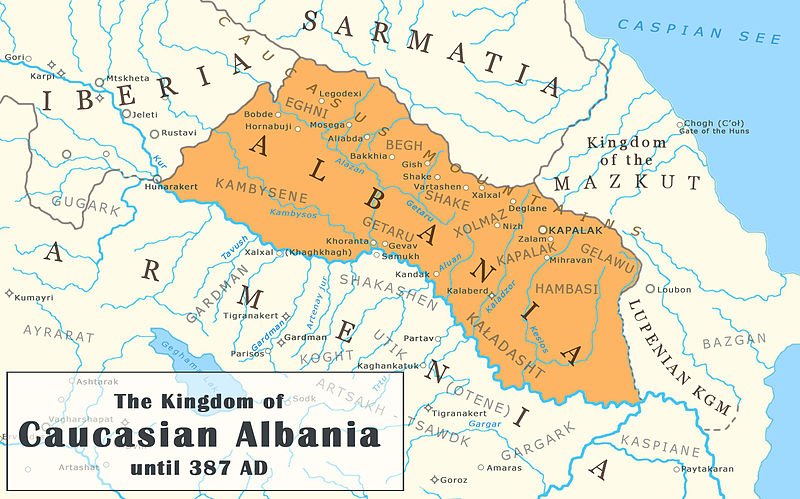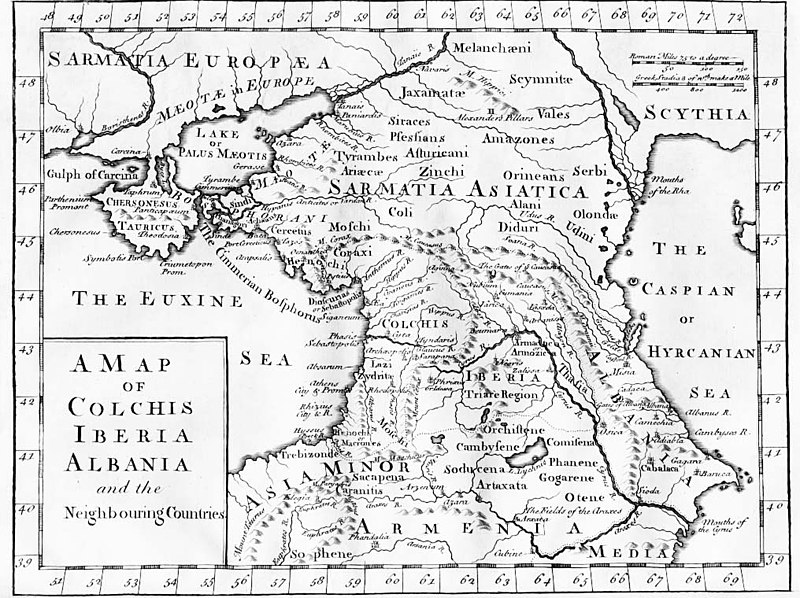I disagree with your aproach to silk road,
allthough it is based very well asumed and have a basis
I personaly believe that
SLAVONIZATION HAS TO DO WITH THE AMBER TRADE ROADS
....also the road of spices mainly the arabian trade the obsidian road, the ivory road etc.
whole idea is that Serians tried to make universal trade route by connecting China (silk) and India (spices) in arc, and connected arc to Europe (amber) via Caucasus and Asia minor and to Africa (ivory) via Levant and Serians of Red sea.. that is idea based on what spread of haplogroup I gives coupled with quote from Seneca....
[369] Though kings should gather themselves together, both they who vex the scattered Scythians and they who dwell upon the Red Sea’s marge, who hold wide sway o’er the blood-red main with its gleaming pearls, they who leave unguarded26 the Caspian heights to the bold Sarmatians; though he strive against him, who dares on foot to tread the Danube’s waves27 and (whersoe’er they dwell,) the Serians28 for fleeces famous – ‘tis the upright mind that holds true sovereignty. He has no need of horses, none of arms and the coward weapons which the Parthian hurls from far when he feigns flight, no need of engines hurling rocks, stationed to batter cities to the ground. A king is he who has no fear; a king is he who shall naught desire. Such kingdom on himself each man bestows.
Seneca - Thyestes
27. i.e. the frozen surface.
28. The poet here conceives of the Serians as near by Scythia.
http://www.theoi.com/Text/SenecaThyestes.html
Serians of Red sea are known as merchants:
The Sabaeans, like the other Yemenite kingdoms of the same period, were involved in the extremely lucrative spice trade, especially frankincense and myrrh.[2]
http://en.wikipedia.org/wiki/Sabaeans
Btw. the area of main influence of Serians seems to be between Red sea on south and Black sea on north, Balkans on west and China and India on east
Note that Red sea = south sea, Black sea = north sea, as Iranian steppe people (Sarmatians) and Slavic people had color scheme for sides of the world in which red = south, black = north, white = west
(white Serbia = west Serbia, white Croatia = west Croatia, Belorus = white Russia = west Russia)
as a side note, strange is the name of Montenegro (Crna Gora) meaning Black mountain, which indicates originally it was location north of settlement area of Slavic/Iranian people who gave it its name that is preserved till today...this does not fit with theory of 7th century settlement of Serbs...
anyway, Serians/Seres/Serve of Serica in north-west China are also merchants
"From these the course (of the shore) makes a bend and trends to the coast line which faces the east. That part which adjoins the Scythian promontory is first all impassable from snow ; then an uncultivated tract occupied by savages. These tribes are the Cannibal Scythians and the Sakas, severed from one another by a region where none can dwell because of the number of wild animals. Another vast wilderness follows, occupied also by wild beasts, reaching to a mountain called Thabis which overhangs the sea. A long way from that the ridge of Taurus rises. The Seres come between the two; a race eminent for integrity, and well known for the trade which they allow to be transacted behind their backs, leaving their wares in a desert spot" (Pomponius Mela, De Situ Orbis, III, 7).
http://en.wikipedia.org/wiki/Seres
"They also informed us that the side of their island (Taprobane) which lies opposite to India is ten thousand stadia in length, and runs in a south-easterly direction--that beyond the Emodian Mountains (Himalayas) they look towards the Serve (Seres), whose acquaintance they had also made in the pursuits of commerce;
http://en.wikipedia.org/wiki/Seres
Siraces/Serboi of Caspian higlhlands are also merchants
They migrated from the Caspian Sea to the Black Sea region. By the late 4th century, they had occupied lands between the Caucasus mountains and the Don, becoming masters of the Kuban region. They were the first Sarmatian tribe to have contact with the Hellenic groups on the coast of the Black Sea.[2]
...
They and the Aorsi were merchants who traded with goods of Babylonia and India through the Armenians and Medes, with camels. They profited greatly from this, seen in their clothing attributed with much gold.[2]
...
They are believed to be the same or connected to the Serboi.
http://en.wikipedia.org/wiki/Siraces
thus, they migrated from Caspian highlands to Kuban region
The Byzantine Emperor Constantine VII Porphyrogenitos, in his Book Of Ceremonies, calls the Croats and Serbs "Krevatas and Sarban"[citation needed], who were located between Alania and Tsanaria. Ṣārbān is also the name of a Pashtun tribe in Afghanistan, who are believed to be - at least in part - of Scythian descent or According to legend,Pashtun people, ethnic Afghans traditionally claim descent from the Lost Tribes....
http://www.worldlingo.com/ma/enwiki/en/Theories_on_the_origin_of_the_Serbs
As, I have shown many times Pashtun Sarbans match perfectly spread of haplogroup I in Avganistan and Pakistan...
Tsanaria is northwest part of MtskhetaMtianeti region in Georgia
Alania is Ossetia
this is all in very close proximity of the Kuban region... Kuban region is south most part of Russia next to Black sea - imediatelly above Abkhazia on map above....
Btw. area between Tzanaria and Alania would be somewhere around north Ossetia... and this is half way between Caspian homeland of Siraces/Serboi and Kuban area to where they have moved in 4th century...
The Russians originally called the Ossetians Yas (ясы).
In Late Antiquity, records became much more diffuse and the Iazyges generally ceased to be mentioned as a tribe.
...
The Ossetians descend from the Alans–Sarmatians, a Scythian tribe.[12]
....
At its height, Alania was a centralized monarchy with a strong military force and benefited from the Silk Road.
...
Iron and Digor in the north became what is now North Ossetia-Alania, under Russian rule from 1767. Iron dialect is the literary and written language of the Ossetian language.
Digor in the west came under the influence of the neighbouring Kabard people who introduced Islam. Today the two main Digor districts in North Ossetia are Digora district or Digorskiy rayon (with Digora as its centre) and Irafskiy rayon or Iraf district (with Chikola as its centre). Digora district is Christian while some parts of Iraf district are Muslim. The dialect spoken in Digor part of North Osetia is Digor, the most archaic form of Ossetian language.
http://en.wikipedia.org/wiki/Ossetians
according to
http://www.eva.mpg.de/genetics/pdf/Nasidze.AnHG.2004.pdf
town of
Ardon in north Ossetia has 32% of I and town of Digora has 13% of I while the rest of sampled Ossetians in both north and south Ossetia have 0% of haplogroup I
Ardonsky district in north Ossetia
all this clearly indicates that Serbs and Croats are likely to have originally been haplogroup I (I2a2) carriers.
The question is in what direction did they spread originally...did they recently come from Afganistan and Caucasus, or was spread other way around... All we know is that Seneca mentions Serians who live in arc of Serians from China to India which matches Pashtun Sarbans, the Serians who live among Sarmatians of Caspian highlands which matches Serboi/Siraces, he also talks about Serians rulling over Red sea which we can easily identify in kingdom of Sheba/Sabeans, however so far there is no genetic link to haplogroup I in Saudi Arabia...
and he also mention the ones living around Danube and rulling over Scythians (Dacians in other translations of same text)...thus neighbours of Dacians and living around Danube...this could be Scordisci...
The ethnic affiliation of the Scordisci has been debated by historians. Some refer to them as Celtic[4][5][6],Thracian[7] or Illyrian[8] or a Celtic mix of the above[9].The Scordisci were found during different timelines in Illyria,Thrace and Dacia sometimes splitting into more than one group like the Scordisci Major and the Scordisci Minor[10].
http://en.wikipedia.org/wiki/Scordisci
http://www.euratlas.net/history/europe/1/entity_94.html
besides Scordisci there is another Celtic tribe with tribal name similar to Serians and Serbs
The Serdi were a Celtic tribe[1] inhabiting Thrace. They were located around Serdika,(Greek: Σαρδική or Σαρδῶν πόλις)[2]. They established themselves in this area during the Celtic migrations at the end of the 4th century BC. There is no evidence for their existence before the 1st century BC. They were gradually Thracianized over the centuries but retained their Celtic character up to a late date.
http://en.wikipedia.org/wiki/Serdi
now obviously there is issue of language...
it seems that Sabeans spoke with Arabic language, Scordisci and Serdi with Celtic...
and for Serians of northwest China is written
These people, they said, exceeded the ordinary human height, had flaxen hair, and blue eyes, and made an uncouth sort of noise by way of talking, having no language of their own for the purpose of communicating their thoughts.
(Pliny the Elder, The Natural History, Chap XXIV "Taprobane")
http://en.wikipedia.org/wiki/Seres
what comes to my mind is Slavic word for Germans (also haplogroup I carriers), which literary translates as "mute, not able to speak"....so, perhaps haplogroup I originally did not have very developed language...
on other hand, hm, having no language of their own, might mean that they communicated in front of strangers only in foreign languages...
that would be a good survival tactics in ancient times - do not speak own language in front of strangers, as if language is secret to them they cannot infiltrate into your nation, and thus cannot find out e.g. about plans of wars or preparations for them...
or their language was proto-indo-european, so it was, by others who spoke PIE derived languages, seen as foreigners speaking their own language ...as in weird serbian saying "speak serbian so that the whole world understands you"....after all area of influence of Serians (and likely of I2a2) does cover very large part of indo-european zone... and together with I2a1 and I2b1 it covers west and south Europe as well...











